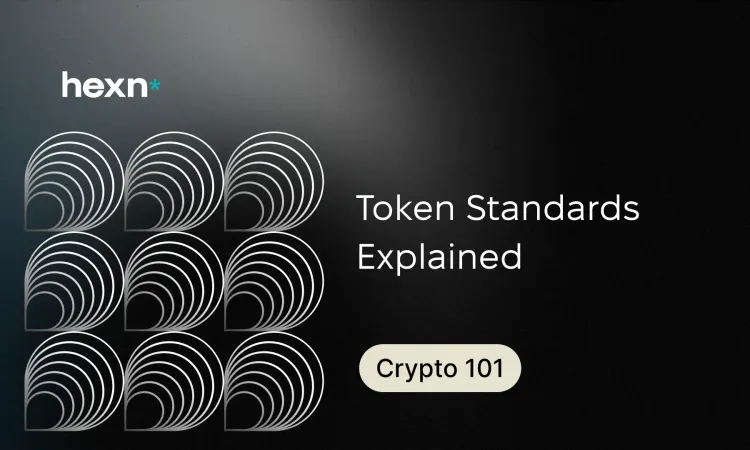Token Standards Explained: ERC-20, ERC-721, ERC-1155, BEP-20
What Are Token Standards
Token standards are formalized rules and interfaces that define how a blockchain token behaves. They make it possible for wallets, exchanges, smart contracts, and apps to recognize, transfer, and manage tokens reliably. For anyone building or using crypto—developers, traders, or collectors—standards reduce friction and expand what tokens can do.
How Token Standards Enable Interoperability, Reuse, and Automation
Interoperability: tokens that work across platforms
When a token follows a known standard, different services can handle it without special adaptations. That means a compliant token can be stored in many wallets, listed on marketplaces, or used in decentralized applications. Interoperability is why you can move, trade, or integrate many tokens without bespoke integrations.
Composability: building blocks for new products
Standards let developers reuse common functionality instead of rewriting the basics every time. This composability accelerates innovation—teams can focus on novel features while relying on well-understood token behavior for transfers, balances, and approvals.
Efficiency: easier automation with smart contracts
Smart contracts rely on predictable interfaces to monitor and interact with tokens. Standards expose common functions (for example, querying balances or transferring tokens), so automated contracts can track and react to token activity more efficiently.
Popular Token Standards
BEP-20: a token template for EVM-compatible chains
BEP-20 is a widely used specification on an EVM-compatible smart chain. It supports a range of token types—utility tokens, stablecoins, pegged assets—and includes optional controls such as minting, pausing, or blacklisting. BEP-20 mirrors many of the functions found in other fungible-token standards, making migration and integration straightforward on compatible networks.
Main functions typically include:
- TotalSupply: returns the total quantity of tokens in circulation.
- BalanceOf: checks how many tokens a given address holds.
- Transfer: moves tokens from one address to another.
- TransferFrom: allows authorized contracts to move tokens on a user’s behalf.
- Approve: sets a spending limit that a contract can pull from an account.
- Allowance: reports how much permission a spender has left.
ERC-20: the standard for fungible tokens
ERC-20 introduced a common blueprint for fungible tokens—assets where each unit is interchangeable with another. That makes ERC-20 tokens suitable for currencies, governance tokens, and many DeFi instruments. While other networks have their own equivalents, the core idea remains the same: a predictable set of functions and events that make tokens easy to integrate.
ERC-721: the non-fungible token standard
ERC-721 defines tokens that are unique and indivisible—commonly used for digital art, collectibles, and certificates. Each ERC-721 token has a globally unique identifier, typically called a tokenId, which ensures distinguishability. Basic features include ownership tracking, transfer capabilities, and metadata pointers that describe the item represented by the token.
ERC-1155: a multi-token standard for mixed use cases
ERC-1155 combines fungible and non-fungible concepts into a single, more flexible interface. It’s designed to handle many token types within the same contract, which reduces overhead and enables powerful batch operations.
Notable ERC-1155 capabilities:
- Batch transfer: move multiple assets in a single transaction.
- Batch balance queries: request balances for several tokens at once.
- Batch approvals: grant permission to manage many tokens in one step.
- NFT support: tokens with a supply of one behave as NFTs within the same framework.
Why Token Standards Aren’t Always Compatible
Standards make tokens compatible within a shared environment, but different standards and blockchains can be incompatible by design. That means a token created for one standard or chain may not be directly usable on another. To bridge these gaps, the industry developed approaches such as wrapping and cross-chain bridges.
Wrapped Tokens: a Bridge Between Ecosystems
Wrapped tokens are representations of an original asset on a different blockchain. Typically, the original asset is locked in custody, and an equivalent token is minted on the target chain. This approach enables using an asset’s value and price exposure across ecosystems, though it introduces custody and trust considerations that users should understand.
Practical Takeaways
Token standards are the plumbing of the crypto world: they standardize behavior so tools can interoperate, developers can reuse code, and users can move value smoothly. Knowing the differences between common standards—fungible vs non-fungible, single-token vs multi-token—helps you pick the right approach for a project or understand how assets will behave across applications. And when standards don’t line up, solutions like wrapping and bridges can help, but they come with trade-offs.
